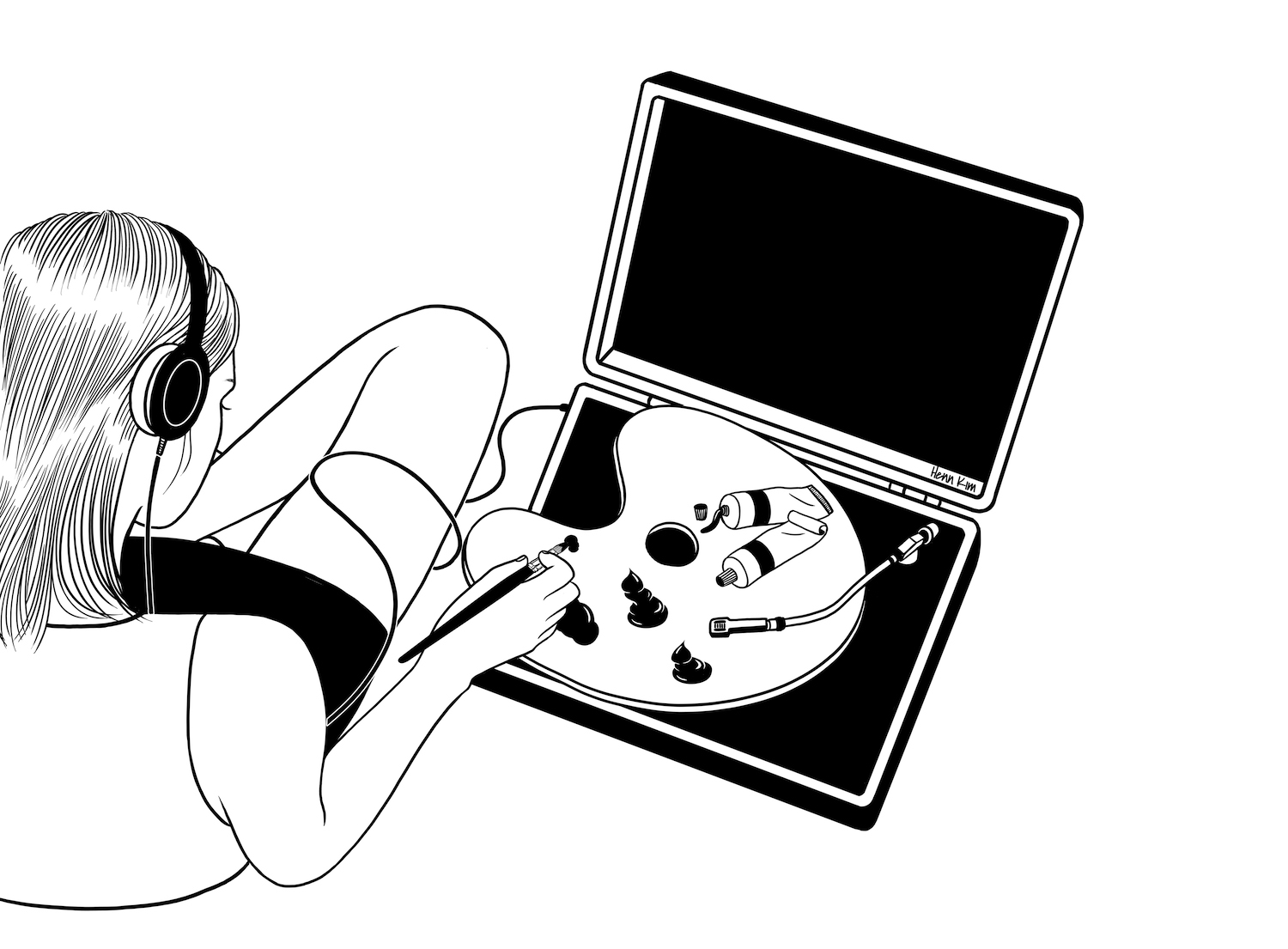Art, meet the environment.
While making art can certainly be good for the soul, it can also be damaging to our soil and surface if we’re not mindful. Creating “carelessly” can not only be wasteful, but super toxic to both artists and their surroundings. So, in honor of Earth Day, we’ve rounded up five ways you can begin to make your art process more eco-conscious.
SURFACES
Whether you create on paper or canvas, opt for substances (like hemp, flax or bamboo) that are recycled, organically-sourced and/or chemical-free. And if it’s wood that’s serving as your surface, or even as the hidden stretcher bars behind your canvas creations, look for a certification from the FSC (Forest Stewardship Council) since the non-profit promotes the responsible management of the world’s forests. Lastly, you can kick your eco-sensitivity (and creativity) up yet another notch by using scrapped and discarded materials—like fabrics, furniture, or even your former failed works—as a brand new surface, as well.
MATERIALS
Many art materials (including acrylic paints, oil paints and aerosols) can boast chemical components—like the familiar formaldehyde, ammonia or lead (and the lesser-known cadmium, manganese, and trichloroethylene)—that can not only be harmful to the air and Earth, but to your own health if and when inhaling them. Instead, elect water-based paints, plant- and mineral-based pigments, and other toxin-free options. If you must work with hazardous materials, consider investing in a fume hood while continuing to keep your studio well ventilated and fully operated under local air quality guidelines.
DISPOSALS
Art materials that are improperly disposed of can ultimately end up in sewer lines and soil, thus posing environmental hazards to both the outdoors and animals. So, first, avoid rinsing pigments directly into a sink—not only could they clog the sink and release toxins into the sewer system, it’s also just a waste of water! (And, yes, even dried, firmed pigments can pose a threat as soil can break those down.) Brushes can instead be rinsed in a solvent, but because those too can possess and produce harmful fumes, look for non-toxic and turpentine-free thinners instead, like citrus-based solvents. Brushes can also be wiped clean with oils—some artists swear by safflower, linseed, or spike lavender—before succumbing to soap and water. And if you must use a toxic solvent, it can (at the very least) be reused: allow the dirty solvent to sit until the pigment has separated and settled, then pour the remaining clean solvent into a new container to be used again. The remaining pigment, however—if hazardous and not intended to be employed again—should be taken to a hazardous waste center. Still, the best way to avoid improper disposal is to buy conservatively, purchasing only what you’re sure will be used in its entirety. Keep in mind you can always ask your local recycling center for tips!
RECYCLING
This goes without saying, but once you’ve run out of reasons to keep your empty tubes and tins, and cans and containers, be sure to recycle them the way you would any other problematic plastic. And once you’ve upgraded on anything—from an easel to an electronic tool—find the nearest business that would benefit from such a donation.
SHIPPING
Whether receiving or sending a shipment, be mindful of the materials and energy required to do so. If possible, buy supplies locally and schlep them yourself; ask your customers to combine online orders (and offer incentives to do so); and, yes, consider the slower but more sustainable(!) shipping option that would likely pollute less.


Comments